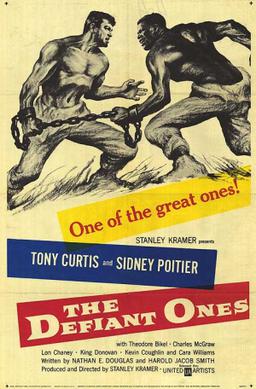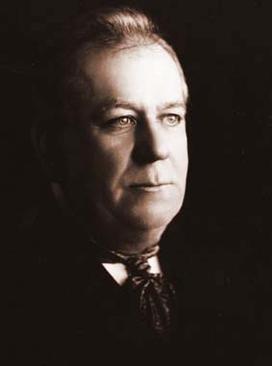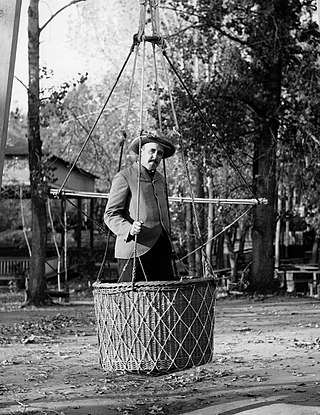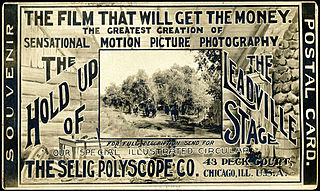Related Research Articles

Cripple Creek is a statutory city that is the county seat of Teller County, Colorado, United States. The city population was 1,155 at the 2020 United States Census. Cripple Creek is a former gold mining camp located 20 miles (32 km) southwest of Colorado Springs near the base of Pikes Peak. The Cripple Creek Historic District, which received National Historic Landmark status in 1961, includes part or all of the city and the surrounding area. The city is now a part of the Colorado Springs, CO Metropolitan Statistical Area and the Front Range Urban Corridor.

The Defiant Ones is a 1958 American drama film which tells the story of two escaped prisoners, one white and one black, who are shackled together and who must co-operate in order to survive. It stars Tony Curtis and Sidney Poitier.

The Routeburn Track is a world-renowned, 32 km tramping (hiking) track found in the South Island of New Zealand. The track can be done in either direction, starting on the Queenstown side of the Southern Alps, at the northern end of Lake Wakatipu or on the Te Anau side, at the Divide, several kilometres from the Homer Tunnel to Milford Sound.
An Occurrence at Owl Creek Bridge is a 1961 French short film, almost without dialogue. It was based on the 1890 American short story of the same name by American Civil War soldier, wit, and writer Ambrose Bierce. It was directed by Robert Enrico and produced by Marcel Ichac and Paul de Roubaix with music by Henri Lanoë. It won awards at the Cannes Film Festival and the Academy Awards. The film was later screened on American television as episode 22 of the fifth season of The Twilight Zone on 28 February 1964.

The Selig Polyscope Company was an American motion picture company that was founded in 1896 by William Selig in Chicago, Illinois. The company produced hundreds of early, widely distributed commercial moving pictures, including the first films starring Tom Mix, Harold Lloyd, Colleen Moore, and Roscoe "Fatty" Arbuckle. Selig Polyscope also established Southern California's first permanent movie studio, in the historic Edendale district of Los Angeles.

The Hanging Tree is a 1959 American Western film directed by Delmer Daves, based on the novelette The Hanging Tree, written by Dorothy M. Johnson in 1957. The film stars Gary Cooper, Maria Schell, Karl Malden and George C. Scott, and it is set in the gold fields of Montana during the gold rush of the 1860s and 1870s. The story follows a doctor who saves a criminal from a lynch mob, then earns the enmity of several prospectors while trying to protect a young woman whom he has nursed back to health after she was injured in a coach robbery. Karl Malden assumed directing duties for several days when Daves fell ill, and the film represented the first cinematic appearance for George C. Scott.
Fire in the Hole was an enclosed roller coaster located at Silver Dollar City in Branson, Missouri. The three-story steel coaster was built in-house by Silver Dollar City in 1972. The ride is often considered a cross between a dark ride and a roller coaster. A similar ride, "Blazing Fury", was built at Herschend Family Entertainment's Silver Dollar City Tennessee, now known as Dollywood, in 1978. On February 13, 2023, Silver Dollar City announced 2023 would be the last season for the ride before it is closed permanently. On August 14, 2023, Silver Dollar City announced the new Fire in the Hole to open in 2024 in the new "Fire District" section of the park.

William Haggar was a British pioneer of the cinema industry. Beginning his career as a travelling entertainer, Haggar, whose large family formed his theatre company, later bought a Bioscope show and earned his money in the fairgrounds of south Wales. In 1902 he began making his own short fictional films, making him one of the earliest directors in Britain. His films were shown worldwide and his short Desperate Poaching Affray is believed to have influenced early narrative drama in American film, especially in chase genre. As a director Haggar is recognised for his use of editing and the depth of staging in his melodramas and crime films.

The Colorado Labor Wars were a series of labor strikes in 1903 and 1904 in the U.S. state of Colorado, by gold and silver miners and mill workers represented by the Western Federation of Miners (WFM). Opposing the WFM were associations of mine owners and businessmen at each location, supported by the Colorado state government. The strikes were notable and controversial for the accompanying violence, and the imposition of martial law by the Colorado National Guard in order to put down the strikes.

The Bull's Eye is a 1917 American film serial directed by James W. Horne. It is now considered to be a lost film.
Numerous narratives and folk beliefs make up the ghostlore of Indiana, a U.S. state in the Midwest, and there are many locations that are considered to be haunted by locals. Some of the hauntings are celebrated in festivals, and most have some history behind them.

King of the Hill is a 2007 Spanish survival thriller film directed by Gonzalo López-Gallego from a screenplay by Javier Gullón and López-Gallego. It stars Leonardo Sbaraglia and María Valverde.
The Eden train wreck of August 7, 1904, occurred when the No. 11 Missouri Pacific Flyer from Denver, Colorado, to St Louis, Missouri, crossed the Dry Creek arroyo bridge near Eden Station, 8 miles (13 km) north of Pueblo, Colorado. As the engine crossed the bridge, a flash flood wave passed over the trestle shearing off the front half of the train and dragging 88 people to their deaths with 22 missing and another dying later of injuries.
The Little Train Robbery is a 1905 American silent Western film directed by Edwin S. Porter. It is a parodic sequel/remake to Porter's 1903 film The Great Train Robbery with an all-child "cast as the robbers, and a miniature railroad and playhouse as sets."

Adjutant General Sherman M. Bell was a controversial leader of the Colorado National Guard during the Colorado Labor Wars of 1903–04. While Bell received high praise from Theodore Roosevelt and others, he was vilified as a tyrant by members of the Western Federation of Miners (WFM).
The lynching of Marie Thompson of Shepherdsville took place in the early morning on June 15, 1904, in Lebanon Junction, Bullitt County, Kentucky, for her killing of John Irvin, a white landowner. The day before Thompson had attempted to defend her son from being beaten by Irvin in a dispute; he ordered her off the land. As she was walking away from him, he attacked her with a knife and she killed him in self-defense with a razor. She was arrested and put in the county jail.

Harry Hale Buckwalter, sometimes credited as Harry H. Buckwalter or Henry H. Buckwalter, was an American photographer, journalist, photojournalist, and silent film director and producer.

The Hold-Up of the Leadville Stage is a 1904 American short silent Western film directed by Harry Buckwalter.
Winston Pounds was an African-American man who was lynched by a mob in Wilmot, Arkansas, on August 25 or 26, 1927.

The lynching of Richard Puryear took place on March 15, 1894, at Stroudsburg, Monroe County, in the U.S. state of Pennsylvania. A mostly white mob seized and hanged Richard Puryear, a Black railroad worker accused of murdering a white storekeeper, after he escaped from prison. A grand jury investigated the lynching, but no members of the mob faced criminal charges or convictions in Puryear's murder.
References
- ↑ "Bloodhound Filmed in Cripple Creek". The Cripple Creek Times. 10 April 1904.
- 1 2 No Name Supplied (1905). "Selig Polyscope Company 1905 Catalog: No. 17, Tracked by Bloodhounds". doi:10.7282/T3PR7W9B.
{{cite journal}}: Cite journal requires|journal=(help) - 1 2 "Tracked by Bloodhounds; or, A Lynching at Cripple Creek (1904)". The American Film Institute. Retrieved 8 June 2018.